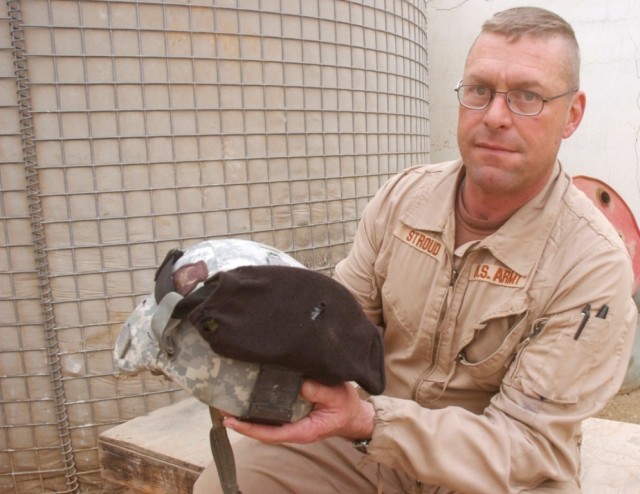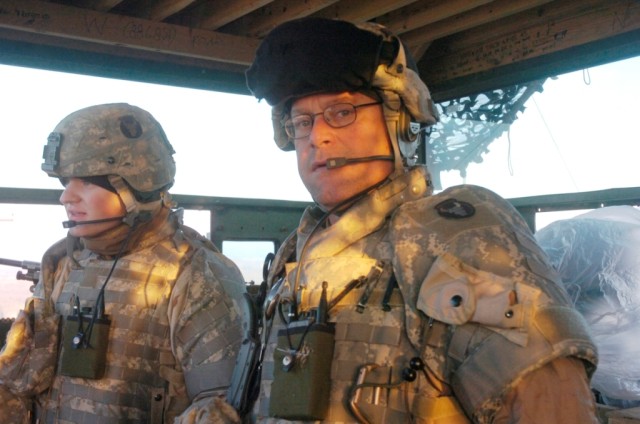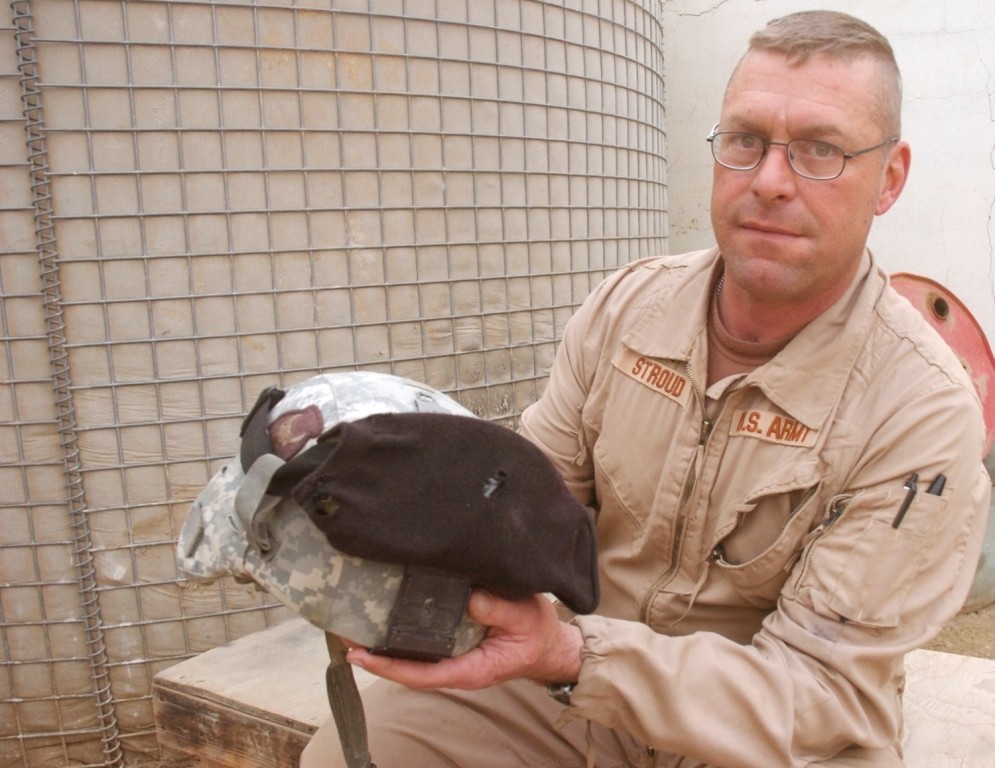CAMP FALLUJAH, Iraq (Army News Service, March 5, 2007) - Sgt. Scott Stroud has relatives who fought for both sides in the Civil War, another relative who "hit the beach" in the Battle of Normandy during World War II and an uncle who served three tours as an infantryman in Vietnam.
So it should be so surprise that this Dalton, Minn., resident and a member of the Minnesota Army National Guard's Company B, 2nd Combined Arms Battalion, 136th Infantry Regiment, would make history while deployed in Iraq.
He is the only Soldier of the 1st Brigade Combat Team, 34th Infantry Division, to earn two Purple Hearts as of March 1, 2007. Since 1917, the Purple Heart has been awarded in the President's name to Soldiers wounded or killed in war.
In 2002 and at age 39, Stroud volunteered to rejoin the Guard after the 9-11 terrorists attacks. He had been honorably discharged from the Army Reserve in 1987.
"This time I did it for whatever help I could do," said Stroud of his reason for rejoining the Guard.
When he earned his first Purple Heart on May 15, Stroud was driving the lead Humvee of a patrol when his vehicle hit a roadside bomb. It was Stroud's third time behind the wheel.
"At the last instant there were a couple guys in the vehicle who said 'I thought I saw something!' but it was too late," said Stroud. "I felt that there was something that I saw out of the corner of my eye, too. I thought I saw something black on the road but there was no time to register. It was after the fact."
That "black object" was hiding four 120 millimeter mortar rounds.
"All of sudden it was boom - complete blackness, choking. The smell of sulfur was so strong, it was unbelievable. You couldn't see your hand in front of your face," he said. "I knew that we were in the air but didn't know how high."
When the Humvee landed, Stroud felt it sliding to the left as its left tire folded underneath the fender. The blast demolished the Humvee's front end and blew the right tire into a field several hundred meters away.
When his Humvee came to a rest, Stroud and his truck commander, Sgt. Matthew Bye, also of Dalton, suffered the worst injuries. Sitting in the front passenger seat, Bye had a broken leg and shrapnel wounds that required surgery. Stroud's injuries included cuts on his legs from shrapnel and a badly sprained right foot.
Bye, who is now at home and out of the Guard, was removed from the Humvee by two Soldiers reaching through the Humvee's firewall and pushing his legs through as other Soldiers pulled him from the passenger compartment.
Stroud, who got out of his vehicle on his own free will, said the first thing he heard when he got out of the Humvee was the left tire was leaking air. He was told to get away from the vehicle and into a secure area, but began retrieving such sensitive items as night-vision goggles and radio parts as a matter of routine.
Stroud returned to duty in 24 hours after an initial hospital visit. Less than two months later, he was hit by another bomb while returning to camp from a patrol in Habbiniyah June 23. Stroud was the lead Humvee's gunner.
"I looked right at it as it went off. I didn't see it," he said. "I was just doing my scanning, looking back and forth and this thing went off in my face."
Stroud suffered ruptured and bleeding eardrums despite wearing an earplug in one ear and his radio headset in the other, and 10 small pieces of shrapnel pierced his cheek. His new goggles, issued to him the day before, absorbed several small pieces of shrapnel. The goggles' felt cover, which was on the back of his helmet, has two large holes from shrapnel. There also is one noticeable chip in the goggles glass, which he still wears today.
The bomb, two 120 millimeter artillery rounds buried under the shoulder, disabled the vehicle by cutting the oil cooling line for the transmission. The bomb's wires were traced to a mosque about 1,000 meters away. Stroud said he stayed in the turret to provide security for fellow Soldiers, who traced the wire.
So far, Stroud's squad has hit six roadside bombs and found five.
As he said, "We find them here and there but you know you're not going to see every one."
(Sgt. 1st Class Clinton Wood writes for the 1st Brigade Combat Team, 34th Infantry Division Public Affairs.)




Social Sharing